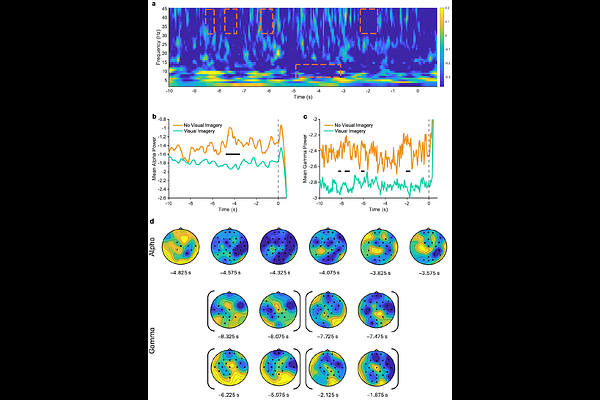SPONTANEOUS VISUAL IMAGERY DURING EXTENDED MUSIC LISTENING IS ASSOCIATED WITH RELIABLE ALPHA SUPPRESSION

SPONTANEOUS VISUAL IMAGERY DURING EXTENDED MUSIC LISTENING IS ASSOCIATED WITH RELIABLE ALPHA SUPPRESSION
Hashim, S.; Omigie, D.
AbstractMusic is widely recognised as being able to evoke images in the mind\'s eye. However, the neural basis of visual imagery experiences during music listening remains poorly understood. Here, we combined probe-caught experience sampling methodology with 32-channel electroencephalography (EEG) recordings in order to investigate the neuro-oscillatory correlates of music-evoked visual imagery and examine how spontaneously generated imagery compares to more deliberately generated forms. Thirty participants listened with closed eyes to four blocks of music, differing in their familiarity and relaxation potential and spanning a range of genres. In response to probes sent throughout listening, participants indicated whether or not they had been experiencing visual imagery and, if they had, whether the experienced visual imagery had been spontaneous or deliberate. Cluster permutation analyses on the time-frequency decomposed EEG data revealed alpha power suppression during visual imagery that was more reliable during spontaneous than deliberate imagery. Further, while theta and delta bands did not discriminate the presence or absence of the visual imagery experience or its intentionality subtypes, we observed that gamma power suppression in fronto-central areas was present during visual imagery experiences. Our results extend prior findings of a role of posterior alpha suppression in visual imagery to show its reliability in music-evoked spontaneous imagery specifically. We consider plausible interpretations of the presence and absence of other oscillatory signatures in relation to the listening conditions used in the current study.